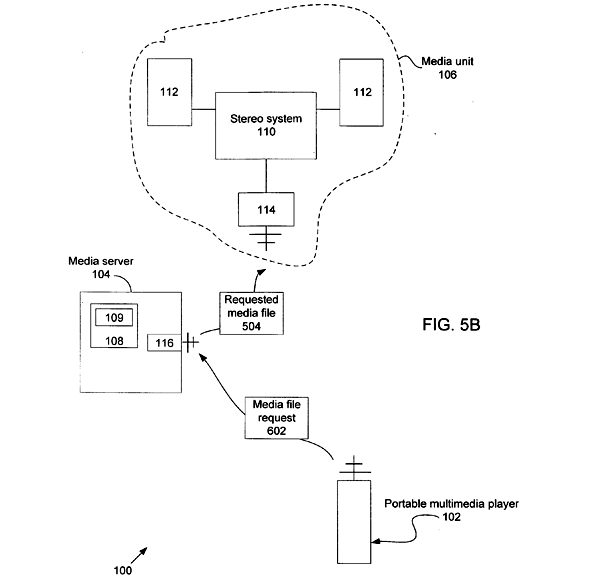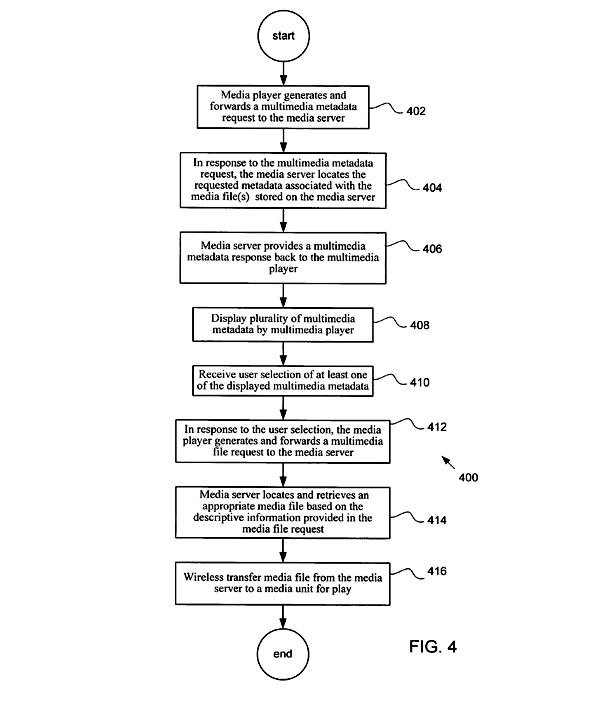Apple may turn iPods, iPhones into wireless iTunes remotes
Apple Inc. has been working on technology that would allow both iPods and iPhones to act as wireless remote controls, channeling the flow of digital media files from computer-based iTunes libraries to home entertainment systems by way of digital media hubs like Apple TV, a recent patent filing has revealed.
"Therefore, in order to utilize the higher quality playback systems, it has become common to install home network systems whereby an individual's personal computer is linked (either wirelessly or wired) to a home entertainment system forming in the process a media system," the company wrote. "Unfortunately, however, in order to control certain aspects of the playback of the multimedia data (such as changing a song, an entire playlist, or even controlling volume) a listener wishing to make such changes must be in physical contact with the personal computer in which the multimedia data being played is stored."
For example, Apple continued, if a listener is in a living room listening to music being streamed to a living room based stereo by a computer wirelessly linked thereto located in an upstairs den, changing the song being played would require the listener to physically walk to the upstairs den where the computer was located and select the desired song.
"Therefore," the company said, "what is desired is a system that leverages existing devices (such as an iPod, AirPort Express, a Mac running iTunes) to provide the remote access and control that would otherwise require the purchase of specialized equipment such as zone controller units and zone players."
For this purpose, Apple identifies a portable multimedia player — such as the iPod — to wirelessly access and control a media server (such as a personal computer running iTunes software) that is streaming digital media by way of a wireless interface to a media unit (such as a stereo/speakers in the case of streaming digital audio).
"The method is performed by binding the portable multimedia player and the media server, wirelessly transmitting a signal from the multimedia player to the media server, and streaming the digital media data from the media server to a media unit by way of a wireless interface using the received signal," the filing states.
Alternatively, the filing continues, a portable digital multimedia player remote controller unit could be arranged to store multimedia media file metadata used to wirelessly control a remote media server. Under this method, the remote controller unit would include a wireless network interface, a display device arranged to display a user interface having a number of user selectable items, and a processor unit that in response to a user selection of one of the user selectable items would generate a signal that is wirelessly sent by the wireless network interface to the remote media server.
"The signal including multimedia file meta data identifying a multimedia file stored on the media server that, in turn, responds to the signals by accessing the identified multimedia file and once accessed, wirelessly sends the identified multimedia file to a remote media unit," Apple explained.
Still yet, the company added, a third method of remote control could be carried out by wirelessly receiving at the personal computer a multimedia file indication from the multimedia player, identifying a multimedia file stored on the personal computer using the received multimedia file indication, accessing the identified multimedia file; and wirelessly sending the identified multimedia file from the personal computer to the remote media unit.
Originally submitted to the United States Patent and Trademark office on December 20, 2005, the filing is credited to Apple employees Steve Ko and Stephen Lemay.
 Prince McLean
Prince McLean












 Malcolm Owen
Malcolm Owen
 William Gallagher
William Gallagher
 Mike Wuerthele
Mike Wuerthele
 Christine McKee
Christine McKee

 Andrew Orr
Andrew Orr
 Sponsored Content
Sponsored Content








